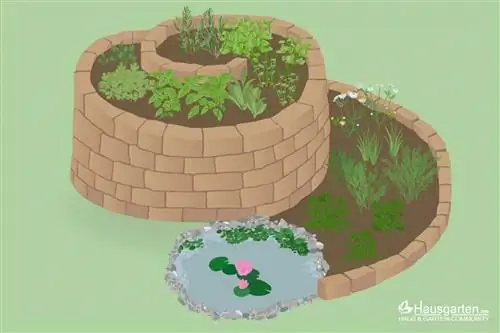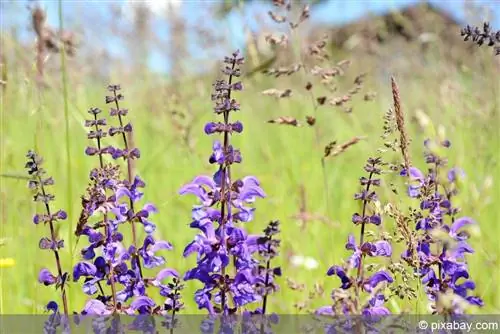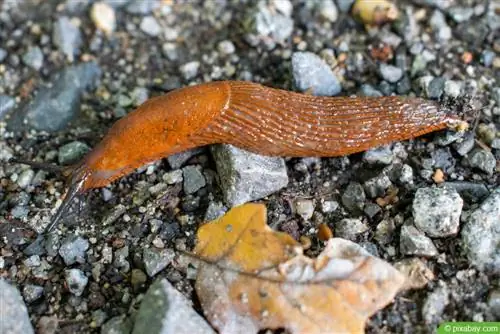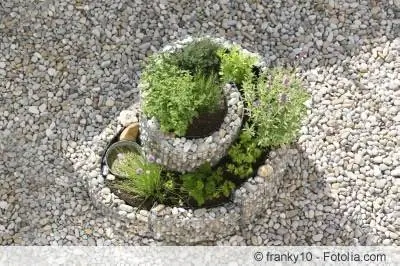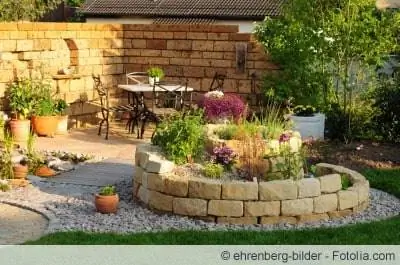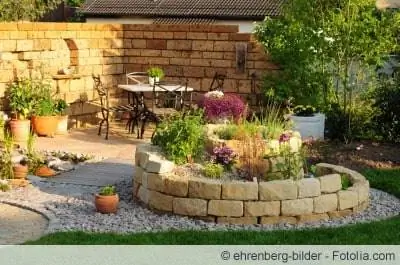- Author admin [email protected].
- Public 2023-12-17 03:39.
- Last modified 2025-01-24 12:45.
A herb spiral can be a visual highlight in the garden. However, the herb snail also has practical advantages as it resembles a raised bed.
Herbal spiral: definition
Whether it's a herbal spiral or a herbal snail - in both cases it's the same principle. It is a raised bed with several levels, so it can be used wonderfully to cultivate numerous varieties and produces a higher yield.
The spiral arrangement creates different levels and therefore different distances from the floor.
Note:
Herb snails can be made from stones or gabions. Using stones alone requires more effort, but also creates a more natural look. Gabions can be set up more quickly and create a more modern image.
Gabions
Gabions are frames made of a strong and rigid metal wire that are filled with stones. As a spiral for herbs or other plants, they serve as a frame into which the soil can be filled. Due to the stone filling, this frame is well permeable. Waterlogging is therefore prevented.
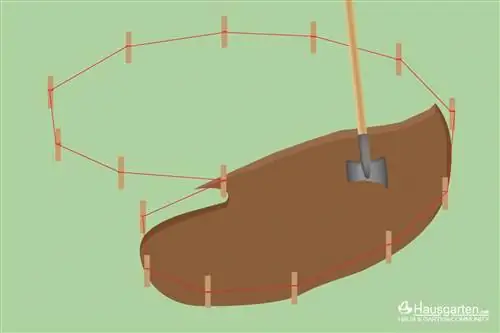
There are also other advantages. These include:
- easy to set up
- large selection of stones
- high stability
- fast implementation
- easy dismantling possible
- numerous variants available
The following steps are required to erect the scaffolding:
Leveling the subsoil
To ensure that the gabions are stable, it makes sense to dig a shallow pit. This should be just like that. If there are already stone slabs or a concrete, intact surface, this step is of course not necessary.
Solidification
For a level and stable surface, it is recommended to consolidate the ground after digging out the earth. A vibrating plate is suitable for this.
Insert foundation
Before the gabion herb spiral can be set up, the excavated pit is first filled with gravel, then gravel and finally with sand. The layers should each be the same height. Once everything has been filled in, it can be compacted again with the vibrating plate.
Setting up and filling gabions
Once the preparations are complete, the frame is positioned as desired. There is a wide variety in the color and size of the stones. So you just have to make sure that the stones are big enough so that they don't fall through the gabion grid. For every other factor, personal taste can decide.
Introduce soil
Before the substrate is introduced, the stones should be rinsed thoroughly. This allows dust and contamination to be removed. Afterwards, it is recommended to add special herbal soil. In any case, the substrate must be tailored to the respective plant.
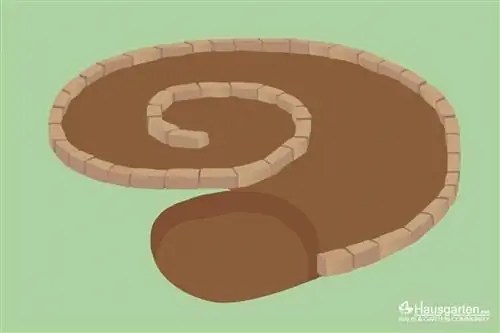
Note:
Since they can be easily dismantled, they are also ideal for rental properties. Because they do not represent permanent change.
Stone spirals: advantages
A brick herb snail is more complex to build, but also more durable. In addition, most people find such a variant to be more decorative and natural. Another advantage is that creativity can run wild here.
This applies to:
- Demarcation of areas possible
- color
- Shape
- Size
- Height
- Combination of stones
- Course of the herbal spiral
It is important to make sure that all herbs can still be harvested without any problems, especially given the size and height. A radius of 70 centimeters is usually within the reach of an adult. This means that the widest diameter is 1.40 meters. An alternative to such large dimensions is to design and build several herbal spirals. This can be useful anyway if a particularly large selection of plants is desired.
Because this makes it possible to cultivate plants that are incompatible with each other at the same time. This doesn't just apply to herbs. Cocktail tomatoes, snack peppers or chili that are suitable for outdoor use can also find a place here.
Tip:
Bricked stone herbal spirals can be a permanent change and are difficult to remove. Written approval should therefore be obtained in advance for leased or rented gardens.
Create a brick herb snail
Before creating the herbal spiral made of natural stones, a foundation must be prepared. There are two options for this. However, the first steps are the same in any case.
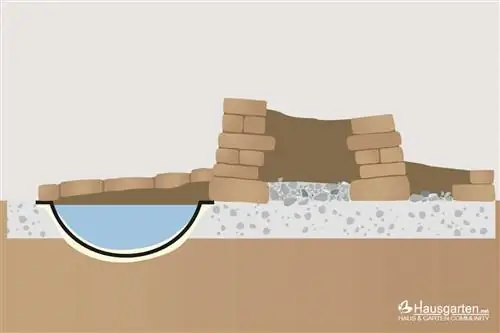
They are:
Excavate, consolidate and fill the foundation
As with the gabion variant, an appropriate foundation should be dug.
To concrete or not
With a brick herb spiral, it makes sense to create a concrete foundation. This ensures a high level of stability and makes assembly easier.
Determine arrangement
It can sometimes be difficult to find the right distances and arrangements, especially with coarse natural stones. It therefore makes sense to determine and determine the desired shape of the spiral in advance. The first row of individual elements is designed so that all stones are in the desired formation and the joints are as small as possible.
Closing joints
When the first row has been laid out and aligned, the stones are first fixed to the surface with mortar. The joints are then also filled with it.
Apply layers
As soon as the mortar has hardened, you can start with the second layer. To do this, the binding material is applied to both the top of the first layer and the lower side of the second layer. The same procedure is followed for each subsequent row.
Tip:
Number the stones, for example using sticked-on pieces of paper or labeled painter's tape. This makes it easier to put the individual pieces together to form a suitable frame.
Planting
Gabions can be planted immediately. If you have a brick herb snail, you should wait several days or even longer, depending on the weather and humidity. It is important that concrete and mortar can dry completely. Otherwise, substances could penetrate into the soil and negatively affect the growth of the plants.
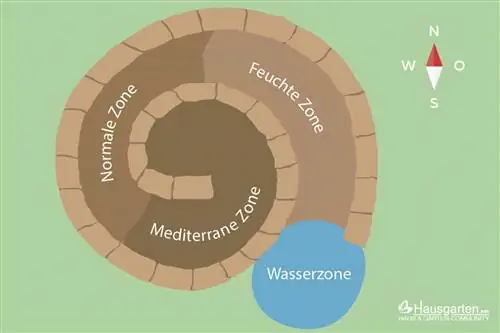
Size
The size depends on several factors. These include:
- own height
- desired number of plants and varieties
- available spaceImportant criteria to consider include:
- Choose the width so that access to the entire herb snail is guaranteed
- Harvest and soil change must be possible
- Using herbs directly in the pot makes them easier to remove for overwintering
- different sections are an advantage
Shapes
There are no limits to your imagination when it comes to shape. The herbal spiral can be high or low, compact or wide and, for example, have a tapering end. Suggested letters with spirals at the end or the reshaping of musical notes are also possible.

